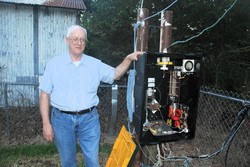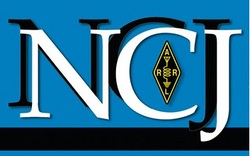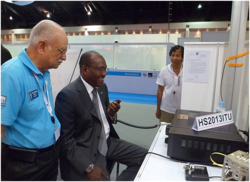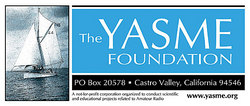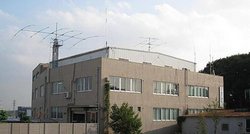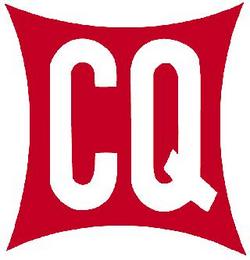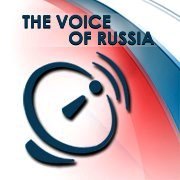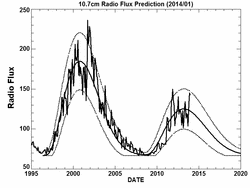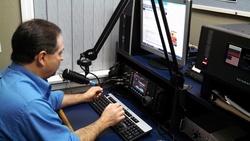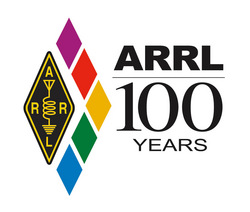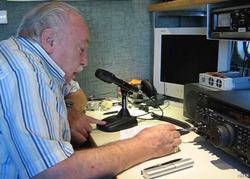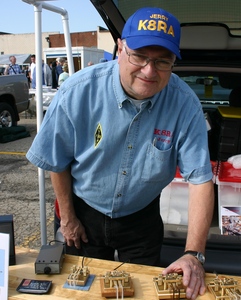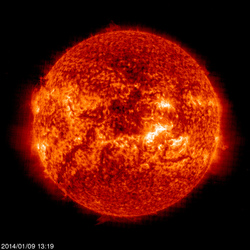 January 9, 2014 John E. Ross, KD8IDJ, Editor
| ||||||||||||||||
Your League: ARRL Reply Comments Cite "Fundamental Misunderstanding" of "Symbol Rate" Petition In reply comments filed on its "symbol rate" Petition for Rule Making (RM-11708), the ARRL said comments opposed to its initiative reflect a "fundamental misunderstanding" of the petition's intent. The League's petition now tops the FCC's list of "Most Active Proceedings." More than 800 comments were filed as of January 7, some of them posted after the December 23 cut-off date and most favoring the ARRL's proposal. The ARRL earlier filed comments with the FCC on its own Petition (plus Erratum). RM-11708 proposes to drop the symbol rate limit in §97.307(f) of the FCC Amateur Service rules, substituting a maximum occupied bandwidth of 2.8 kHz for HF data emissions. The ARRL said those opposing the Petition do not, in general, challenge the removal of the symbol rate limit for data emissions in band segments where RTTY and data emissions are now permitted.
"Rather, they tend to view the proposal to establish a maximum occupied bandwidth of 2.8 kHz for data emissions in the medium-frequency (MF) and high-frequency (HF) bands where data emissions are permitted now as an enabling provision," the ARRL said. Instead, the League said, its Petition is intended to impose "a limitation on the maximum bandwidth of data emissions where none exists now." Given state-of-the-art data technologies, the League said, there is no necessary correlation between the symbol rate and the bandwidth of a data emission. The current symbol rate "acts only as a limit on the efficiency of data emissions in the HF bands as a practical matter, and as an artificial and arbitrary filter on the types of emissions that can be utilized by radio amateurs." The ARRL said its suggested 2.8 kHz maximum bandwidth reflects a balanced approach that will permit all currently used data emissions, encourage experimentation with data emissions that the current symbol rate restriction prohibits, and preclude the use of wider-bandwidth data emissions that could usurp the limited RTTY/data subbands. Petition opponents, the ARRL went on to say, "offer no evidence" that the rule changes it proposes will lead to a situation where data transmissions overwhelm the subband and preclude narrow bandwidth emission communications. "The Commission has properly chastised the Amateur Service for resisting deregulatory proposals that are designed to enable amateur experimenters to refine and adapt technologies," the League said in its reply comments. "ARRL is of the view that outdated Commission regulations that needlessly preclude experimentation with data technologies should not be preserved. Outdated regulations are not a viable alternative to cooperative sharing arrangements in the HF bands through voluntary band plans." Some of those opposing its petition, the ARRL went on to say, expressed the belief that the proposed rule change would impose wider-bandwidth data emissions in spectrum where narrow-bandwidth modes such as CW and PSK31 now operate, to the detriment of the narrow-bandwidth modes. Other opponents contended that the Petition will benefit a few operators at the expense of the many now operating narrowband data, RTTY, and CW on the HF bands. "It is illogical to argue on the one hand that the Petition is intended to benefit 'the few' who are data emission experimenters and users, and on the other hand to predict that the relief requested in the Petition would create a flood of 'wide-bandwidth' data emissions, swamping the band segments used for CW, RTTY, and narrow-bandwidth data emissions," the League pointed out. "If the concern is that the rule changes will encourage more radio amateurs to experiment with data emissions, that would be a positive outcome." The ARRL further asserted that the fear of interference from automatically controlled stations "is not a valid one." Its Petition, the ARRL concluded, "is not a referendum on the value of MF or HF data emissions or data experimentation in those bands," but intended to encourage experimentation now restricted artificially by outdated rules. "It is instead a proposal to delete outdated limitations on Amateur Radio experimentation, which Commission policy supports, and which the basis and purpose of the Amateur Radio Service necessitates." Your League: ARRL-Sponsored Medium-Frequency Experiment Continues as Hams Hope for New Band The ARRL-sponsored medium-frequency experiment, operating as WD2XSH, continues apace in an effort to demonstrate the viability of 472 to 479 kHz as a secondary Amateur Radio allocation. At the same time, the FCC has been silent regarding the ARRL's November 2012 Petition for Rule Making that asked the Commission to make this segment of the spectrum available to radio amateurs in the US. Delegates to the 2012 World Radiocommunication Conference approved a 7 kHz-wide secondary allocation between 472 and 479 kHz for the Amateur Radio Service, with a power limit of 5 W EIRP (or 1 W EIRP, depending on location). The FCC has indicated that it will address the issue within the context of its Notice of Proposed Rule Making in ET Docket No 12-338, to formally reflect the Final Acts of WRC 2007 in its rules. In his quarterly WD2XSH update, Experiment Coordinator Fritz Raab, W1FR, reported that 514 contacts -- 10 in the last quarter -- have been logged among those taking part in the experiment across the US.
"As usual, activity increased as conditions improved during the fall. Much of the recent activity has involved WSPR-15," Raab reported. "Reception over significant distances (eg, Europe, Alaska) has been reported. Much of the activity is being undertaken by a few new experimental licensees." Raab noted that WD2XSH participant Brian Justin, WA1ZMS, transmitted Fessenden commemorative broadcasts on AM via his own experimental license, WG2XFQ, during the December holidays. In the US, the 472-479 kHz band is part of the larger 435-495 kHz segment that is allocated on a primary basis to the Maritime Mobile Service (federal and non-federal users), and on a secondary basis for federal government aeronautical radionavigation. The ARRL stated in its Petition that it is unaware of any domestic assignments that might conflict with the allocation of 472 to 479 kHz to the Amateur Radio Service, and there is almost no power line carrier (PLC) operation in this band segment. The FCC in 2003 cited the potential for interference to utility-operated PLC systems when it turned down an ARRL petition seeking an LF "sliver band" at 135.7 to 137.8 kHz. The WD2XSH experiment involves more than three dozen stations and includes all geographic areas of the US, including Alaska and Hawaii. Most of the stations are in the eastern half of the US. Raab has reported no interference issues during the WD2XSH experiment, begun in 2006 and initially using spectrum in the vicinity of 500 kHz. Read more. Your League: National Contest Journal (NCJ) Debuts New Website! National Contest Journal (NCJ), the ARRL publication devoted to Amateur Radio contesting, has a fresh, new presence on the web, although the URL remains the same.
"The new site was designed with simplicity and ease of use in mind," said NCJ Editor Kirk Pickering, K4RO. "The site contains selected feature articles as well as a group of tools for setting up teams and submitting logs for NCJ-sponsored contests. It also offers an archive of scores for all NCJ going back to 2001. The site still has room to accommodate new features in the future, so stay tuned." Pickering said the new NCJ website was a collaborative effort, and he expressed his appreciation to Bruce Horn, WA7BNM, "for his tireless support of the NCJ website from its inception" as well as to George Fremin, K5TR, who has served as the systems administrator. Pickering also thanked his partner Susie Coleman, who helped design the look and feel. "We hope that you will find the new site useful. Thanks to all who have helped to make this happen," said Pickering, who invited comments on the new site and design. Published every other month, NCJ features general-interest and technical articles and columns by top contesters, operator profiles, editorial comments, and correspondence from readers, as well as scores for the North American QSO Party and North American Sprint, which NCJ sponsors. International: IARU Showcases Amateur Radio at ITU Telecom World 2013 The International Amateur Radio Union (IARU) got some visibility for Amateur Radio at ITU Telecom World 2013, sponsored by the International Telecommunication Union. The event was held November 19-22 in Bangkok, Thailand. The IARU and IARU Region 3 leaders arranged the display in cooperation with the ITU. A large, flat-screen TV in the booth displayed videos of Amateur Radio activities. Special event station HS2013ITU was on the air from the site. IARU President Tim Ellam, VE6SH, spoke at one of the forums. A highlight of the show for the IARU contingent was a visit by ITU Secretary General Dr Hamadoun Toure, HB9EHT. He took a turn at the operating position of HS2013ITU while there.
"We had a number of high-profile visitors to the booth, including ministers of communications and government regulators from various countries," said IARU Region 3 Director Peter Lake, ZL2AZ, and Region 3 Chairman Gopal Madhavan, VU2GMN, in a report. "They were keen to discuss the situation in their respective countries and the association with IARU and to learn about Amateur Radio and its capabilities. Telecom World 2013 gave the IARU a unique opportunity to showcase Amateur Radio at the highest level." ITU Telecom World 2013 also offered an opportunity for the IARU representatives to influence leaders who can favorably impact radio regulations and national attitudes toward Amateur Radio. "The presence of IARU, and its effort to showcase Amateur Radio and its capabilities, was well appreciated by all who visited the booth, and the effort was well worthwhile," said the IARU's report. "We also laid a foundation under the new ITU Telecom World structure to gain some similar space at the next event in 2014 in Qatar." Read more. International: Yasme Foundation Announces Supporting Grants To further the development of Amateur Radio around the world, The Yasme Foundation has announced the recipients of four supporting grants:
The Yasme Foundation is a not-for-profit corporation organized to conduct scientific and educational projects related to Amateur Radio, including DXing and the introduction and promotion of Amateur Radio in developing countries. The Foundation supports individuals and organizations providing or creating useful services for the Amateur Radio community, regardless of originality or novelty, to further the development of Amateur Radio around the world. Radiosport: New ARRL Single-Operator Unlimited Contest Category Now in Effect Responding to many requests, the ARRL Programs and Services Committee in 2013 accepted the Contest Advisory Committee (CAC) recommendation to add the Single-Operator Unlimited category to the ARRL 10 Meter Contest, ARRL 160 Meter Contest, RTTY Roundup, and the IARU HF Championship. "This particular issue has been a long time coming," said CAC Chairman Al Dewey, K0AD. The new category permits the use of spotting information within the Single-Operator class. In the past, using spotting information placed a station in the Multioperator category. Per the revised rules, "Single-Operator Unlimited: The use of spotting assistance or automated, multi-channel decoders is permitted." Ham Radio Business: Tokyo Hy-Power Files for Bankruptcy Tokyo Hy-Power, a manufacturer of Amateur Radio amplifiers, antenna tuners, and other equipment, is in bankruptcy, and its plant, in Saitama Prefecture near Tokyo, has been shuttered. Telephones at the company no longer are being answered, and its Japanese website has been taken down, although the company's US website remains working. Company CEO/President Nobuki Wakabayashi, JA1DJW, founded Tokyo Hy-Power Labs in 1975. He blamed "the recent depression in the industrial RF power products area [which] has led to the very difficult financial position."
Tokyo Hy-Power's early products were HF antenna couplers, although within a couple of years it began manufacturing amplifiers for the Amateur Radio market, including solid-state mobile amplifiers. Among its early products was the HL-4000 linear amplifier, which the company claimed was "the first real HF band high-power linear of its kind in Japan." It has been manufacturing RF products for the industrial market since 1984. The company also once marketed the HT-750, a portable, low-power SSB/CW transceiver for 40, 15, and 6 meters in a hand-held transceiver form factor. At Dayton Hamvention® 2013, the company displayed a prototype of the XT-751, an advanced model it hoped to develop, covering 40 through 6 meters and with an internal antenna tuner. Among its latest products were solid-state HF amplifiers, as well as amplifiers for 6 and 2 meters. In a December 26 news release, Ham Radio Outlet (HRO) reacted with "disappointment" and said it was "deeply saddened" to learn that Tokyo Hy-Power had gone into bankruptcy. "This action in Japan appears to be similar to a Chapter 7 action here within the United States, as the process in this case appears to be the liquidation of organizational assets in order to attempt to fund some portion of its debt obligation(s)," the HRO release said. "This appears to indicate that a court has deemed the organization unable to be effectively reorganized under Japan's Civil Reconstruction Code." HRO said it was working with AVSL, the current US service provider for Tokyo Hy-Power products "to discuss the opportunity of continued maintenance at the component level of the US-sold Tokyo Hy-Power line of amplifiers." Read more. Ham Radio Business: CQ to Realign Publications, Launch Digital Supplement CQ Communications Inc has announced plans to realign its publications lineup and to launch a new online supplement to its flagship magazine, CQ Amateur Radio. "The hobby radio market is changing," said CQ Communications President and Publisher Dick Ross, K2MGA, "and we are changing what we do and how we do it in order to continue providing leadership to all segments of the radio hobby."
Effective with the February 2014 issue of CQ, said Ross, content from the magazine's three sister publications -- Popular Communications, CQ VHF and WorldRadio Online -- will be incorporated into CQ's digital edition as a supplement to be called CQ Plus. The print editions of Popular Communications and CQ VHF will be phased out, and WorldRadio Online will no longer exist as a separate online publication. Current Popular Communications, CQ VHF and WorldRadio Online subscribers will be converted to CQ subscribers and receive CQ Plus at no additional charge. Details will be posted on each magazine's website. CQ Communications says the change will offer hobby radio enthusiasts a single source for articles from shortwave listening and scanner monitoring to personal two-way services and Internet radio, as well as Amateur Radio. Richard Fisher, KI6SN, currently editor of both Popular Communications and WorldRadio Online, will be editor of CQ Plus. Read more. Ham Radio Business: InnovAntennas Acquires Force 12
InnovAntennas has acquired the legendary Force 12 antenna company and product line and has moved the Force 12 factory from Bridgeport, Texas, to Grand Junction, Colorado, into a facility shared with InnovAntennas America. InnovAntennas Ltd in England is now manufacturing Force 12 products for the European market at its Canvey Island plant. The Grand Junction facility is up and running, manufacturing and shipping antennas. InnovAntennas says it plans to produce updated versions of classic Force 12 antennas as well as all-new models. InnovAntennas Founder Justin Johnson, G0KSC, was at the Colorado facility in late 2013 to assist in setting up and laying out the factory, and the company was expected to be at full production this month. -- Thanks to The ARRL Contest Update DX: ARRL DXCC Desk Approves ZD9KX Operations The ARRL DXCC Desk has approved the 2012 and 2013 operation of ZD9KX -- Tristan Da Cunha & Gough Islands for DX Century Club credit. If a request for DXCC credit for this operation has been rejected in a prior application, contact ARRL Awards Branch Manager Bill Moore, NC1L, to be placed on the list for an update to your record. Please note the submission date and/or reference number of your application in order to expedite the search for any rejected contacts. DXCC is Amateur Radio's premier award that hams can earn by confirming on-the-air contacts with 100 DXCC "entities," most of which are countries in the traditional sense. You can begin with the basic DXCC award and work your way up to the DXCC Honor Roll. Learn more. -- ARRL Awards Branch Manager Bill Moore, NC1L Shortwave Listening: Voice of Russia to Continue Shortwave Broadcasting in 2014 To paraphrase Mark Twain, reports of the demise of the Voice of Russia (VOR) may have been greatly exaggerated. Earlier this year the Voice of Russia -- the former Radio Moscow during the Soviet Era -- appeared poised to cease shortwave broadcasts as of January 1, 2014. In the wake of a December decree signed by Russian President Vladimir Putin that merged the Voice of Russia with several other state-run news agencies, SWL Tom Witherspoon, K4SWL, contacted VOR.
"We are glad to let you know that the Voice of Russia will stay on the air in 2014, however, considerable changes in our frequency schedule are expected," the broadcaster told Witherspoon and as he reports on his blog. The posted VOR schedule, which runs through March, indicates 38 aggregate hours of shortwave broadcasts to all parts of the world, most beamed at the Middle East and Asia. Shortwave broadcasts to Europe, Latin America, Oceania, and Africa account for just 15 aggregate hours. VOR, which claims to be the first radio station to broadcast internationally, also broadcasts online, via satellite, on FM, and via three medium-wave transmitters. In 2003 VOR was among the first major international radio broadcasters to launch daily broadcasts to Europe in Digital Radio Mondiale (DRM). Propagation: Solar Flux Record High Could Herald Better Conditions The 10.7 centimeter solar flux index (SFI) jumped to a Cycle 24 record of 262 on January 4, suggesting that Cycle 24 has not yet begun drawing to a close and may be approaching or at a "second peak." The previous peak for the current cycle was 190 on September 24, 2011. As NASA's Marshall Space Flight Center (MSFC) explains, the flux of the sun's radio emissions at 10.7 centimeter (2.8 GHz) is another indicator of solar activity levels, since it tends to follow changes in the solar ultraviolet that influence Earth's upper atmosphere and ionosphere. "Many models of the upper atmosphere use the 10.7 centimeter flux (F10.7) as input to determine atmospheric densities and satellite drag," NASA/MSFC noted, adding that SFI "has been shown to follow the sunspot number quite closely." The January 6 sunspot count was 225. The Cycle 24 sunspot count peaked at 282 on November 17, 2013, according to WM7D.net.
Canada's Dominion Radio Astrophysical Observatory (DRAO) indicated an "official" flux of 262 at 2000 UTC on Saturday, January 3. The official figure for Sunday, January 5, was 217.5. ARRL solar observer Tad Cook, K7RA, who reports 10.7 centimeter flux numbers in his weekly "Solar Update" bulletins, suggests that they are not as valuable as sunspot numbers in predicting radio propagation. The solar flux was over the January 4-5 weekend was far higher what was anticipated, judging by predictions Cook reported in his January 3 "Solar Update" for this past weekend and the week ahead. NASA/MFSC indicates a 95 percent predicted flux for the month of January at 146.5, continuing at about the same level through the first half of the year. The Daily DX said the SFI was expected to remain above 200 for this week. As Ian Poole, G3YWX, explained solar flux in his article, "Understanding Solar Indices" in the September 2002 edition of QST, "[H]igh values generally indicate there is sufficient ionization to support long-distance communication at higher-than-normal frequencies." He pointed out, though, that it can take a few days of high values for conditions to show improvement. "Typically values in excess of 200 will be measured during the peak of a sunspot cycle, with high values of up to 300 being experienced for shorter periods," Poole wrote. Read more. ARRL Centennial: W100AW Hits the Airwaves! At the stroke of midnight Eastern Time on January 1, Hiram Percy Maxim Memorial station W1AW at ARRL Headquarters in Newington took to the air to debut its special ARRL Centennial call sign, W100AW. ARRL Chief Executive Officer Dave Sumner, K1ZZ and Membership and Volunteer Programs Manager Dave Patton, NN1N, and ARRL Station Manager Joe Carcia, NJ1Q, were at the helm into the wee hours of New Year's Day.
Daylight hours saw ARRL Chief Operating Officer Harold Kramer, WJ1B; Membership and Volunteer Programs Assistant Manager Norm Fusaro, W3IZ; Public Relations Manager Sean Kutzko; KX9X and QST Editor in Chief Steve Ford, WB8IMY, taking their turns at the operating positions. By mid-afternoon, several thousand contacts were in the log on SSB, CW and RTTY. "This is just the beginning," said Kutzko. "Hams will hear W100AW throughout 2014 on every mode possible. When you hear us, spot us on the cluster!" Not surprising, 20 meter SSB yielded the most contacts -- 1121 of the 3700 logged -- during the 19 hours of New Year's Day operation from W100AW. Ten meter phone was in second place with 639 contacts. W100AW contacts will be uploaded to Logbook of The World (LoTW). QSL cards sent by mail will be acknowledged as well. W1AW Portable Operations, ARRL Centennial QSO Party
The ARRL Centennial "W1AW WAS" operations are taking place throughout 2014 from each of the 50 states, relocating each Wednesday (UTC) to a new pair of states (this week, South Carolina and Utah. Listen for W1AW/4 and W1AW/7). During 2014 W1AW will be on the air from every state at least twice and from most US territories, and it will be easy to work all states solely by contacting W1AW portable operations. In conjunction with the 100th anniversary of the ARRL, the ARRL Centennial QSO Party also kicked off January 1 for a year-long operating event in which participants can accumulate points and win awards. The event is open to all, although only ARRL members and appointees, elected officials, HQ staff and W1AW are worth ARRL Centennial QSO Party points. Working W1AW/x from each state is worth 5 points per contact. To earn the "Worked all States with W1AW Award," work W1AW operating portable from all 50 states. (Working W1AW or W100AW in Connecticut does not count for Connecticut, however. For award credit, participants must work W1AW/1 in Connecticut.) A W1AW WAS certificate and plaque will be available (pricing not yet available). Some Statistics As of today (January 9), more than 6700 stations have earned points in the Centennial QSO Party by uploading qualifying QSOs to Logbook of The World (LoTW). Operating from North Carolina and West Virginia during the first week of the W1AW portable operations, W1AW/4 and W1AW/8 logged approximately 33,000 contacts. "The second week is off to a roaring start from South Carolina and Utah," reported ARRL Membership and Volunteer Programs Manager Dave Patton, NN1N. ARRL Centennial: A Century of Amateur Radio and the ARRL
Editor's note: "A Century of Amateur Radio and the ARRL" will be a weekly feature as the ARRL celebrates its Centennial in 2014. In Amateur Radio, as in all fields, 100 years has brought about amazing progress and changes. During 2014, we will give you a sense of the ARRL's and Amateur Radio's history by looking through the issues of QST from its humble beginning to the present. We'll examine the important topics and events of interest to amateurs, such as technology, operating tips and events, ARRL's doings, and FCC actions. Because of the limited space available here, the comments will be brief, but they will provide citations to original QST articles for your further reading. The next century will bring about changes that will be mind-boggling to us, because technology advances at an exponential rate. Being aware of the past 100 years of ham-related events is valuable to us for historical reasons, and it also makes us consider what might lie ahead. Next time: A look at the earliest years of Amateur Radio and the ARRL. -- Al Brogdon, W1AB Milestones: Founder and President Emeritus of 4U1UN, Max de Henseler, HB9RS, SK
Max de Henseler, HB9RS, the founder and president emeritus of 4U1UN at United Nations headquarters in New York, died December 30. He was 80. A ham since 1955, de Henseler had been a short-wave listener since the late 1940s. In 1976, while in New York as the UN's chief cartographer, de Henseler reactivated the United Nations Radio Club station K2UN at its new home in midtown Manhattan. As Jack Troster, W6ISQ, explained in the July 1989 issue of QST, "Through his efforts, the Secretary General approved the operation of a specifically designated UN amateur station using the call 4U1UN in early 1978." De Henseler introduced the new call sign on February 4, 1978, during the first weekend of the then two-weekend ARRL International DX phone contest, surprising many contesters. 4U1UN was approved for DXCC credit, due to the efforts of "Mister UN Radio." The 4U1UN United Nations Headquarters Station was dismantled in 2010 due to the extensive renovation project on the Secretariat Building. Read more. -- Thanks to The Daily DX Milestones: QST Author, CW Key Maker Jerry Pittenger, K8RA, SK QST author and CW key crafter Jerry Pittenger, K8RA, of Powell, Ohio, died January 2 of pancreatic cancer. He was 66. Licensed in 1960, Pittenger was a retired systems engineer. He earned a bachelor's degree at Miami University and an MS in systems engineering from Ohio State.
Pittenger enjoyed building his own equipment, and some of his amplifier projects were featured in QST, The ARRL Handbook, and RF Amplifier Classics. More recently he manufactured a line of solid-brass iambic and single-lever CW keys sold worldwide, until illness forced him to quit. "Making my CW keys fills much of my time, but it is a labor of love," Pittenger said in his online profile. "I can get lost in time machining metals and making things in the shop for the radio." His friends Mike Freeman, NT8O, and Fred Freeman, N8BX, have taken over the production of the K8RA line. Read more. Milestones: Austin Amateur Radio Supply Owner Johnny Paul, WA5BGO, SK The owner of Austin Amateur Radio Supply, John E. "Johnny" Paul, WA5BGO, of Austin, Texas, died December 10. He was 74. Paul was the proprietor of Austin Amateur Radio for 45 years. First licensed in 1960, Paul was a past president of the Austin Amateur Radio Club and was an avid photographer of nature and landscapes. Services were December 16. Solar Update Tad Cook, K7RA, in Seattle, reports: A big storm is brewing! At 2324 UTC on January 8 the Australian Space Forecast Centre issued this geomagnetic disturbance warning: "Increased geomagnetic activity expected due to coronal mass ejection from 09-10 January 2014."
NOAA forecasters estimate a 90 percent chance of geomagnetic storms on January 9. The predicted planetary A indices for January 9 through January 13 are 73, 41, 15, 8 and 5. While an emblematic number for hams, 73 is a huge value for the planetary A index. One has to look way, way back to find a value like this. The planetary A index was 67 on both March 9, 2012, and September 26, 2011, but nothing exceeds what is predicted for January 9 except the planetary A index of 104 on December 15, 2006, and 105 on September 11, 2005. This has been an exciting week for sun watchers. The daily sunspot number reached 245 on January 6, and solar flux was 237.1 on January 8. The GOES-15 X-ray background flux has also been high, and that may be more significant for enhanced HF propagation than a high solar flux. NOAA's Space Weather Prediction Center maintains an archive of X-ray flux, solar flux, and sunspot numbers (check the links marked "DSD.txt." The links marked "DGD.txt" will give you daily geomagnetic indicators). Over the past week, average daily sunspot numbers rose more than 80 points to 188.1, and average daily solar flux was up by more than 62 points to 201.6. Predicted solar flux for the near term is 195 on January 9-12, 190 on January 13, 160 on January 14, 155 on January 15-16, and 150 on January 17-19. It then rises to a peak of 190 on January 29 through February 3. Predicted planetary A index values are 73, 41, 15 and 8 on January 9-12, 5 on January 13-22, 10 on January 23, 8 on January 24, 5 on January 25-27, then 10, 18 and 8 on January 28-30, then 5 again until February 6. For the Friday, January 10, "Solar Update," look for an update on the latest disturbance and forecast, as well as reports from readers. I welcome your reports and observations via e-mail. Getting It Right! In The ARRL Letter, December 19, 2013, we inadvertently omitted 20 meters from the list of bands available for the ARRL Centennial QSO Party. Just Ahead in Radiosport
Upcoming ARRL Section, State and Division Conventions and Events
Find conventions and hamfests in your area. ARRL -- Your One-Stop Resource for Amateur Radio News and Information Join or Renew Today! ARRL membership includes QST, Amateur Radio's most popular and informative journal, delivered to your mailbox each month. Listen to ARRL Audio News, available every Friday. Subscribe to... NCJ -- National Contest Journal. Published bi-monthly, features articles by top contesters, letters, hints, statistics, scores, NA Sprint and QSO Parties. QEX -- A Forum for Communications Experimenters. Published bi-monthly, features technical articles, construction projects, columns and other items of interest to radio amateurs and communications professionals. Free of charge to ARRL members: Subscribe to the ARES E-Letter (monthly public service and emergency communications news), the ARRL Contest Update (bi-weekly contest newsletter), Division and Section news alerts -- and much more!
| ||||||||||||||||

